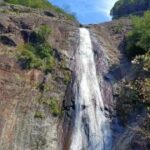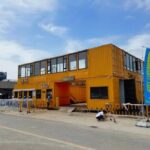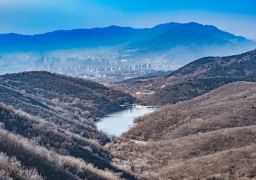Xiyang Temple, also known as ‘Songyuan Temple’ and ‘Wu Panfu Temple’, is located by the Songyuan Stream in Xiyang Village, Wudabaoxiang. It is a commemorative building built by ancient mushroom farmers to commemorate Wu Sangong, the originator of mushrooms. It was first built in the first year of Xianchun in the Song Dynasty (1265). After several changes, it was rebuilt with funds raised by mushroom farmers from Qingyuan, Longquan, and Jingning counties in the first year of Guangxu in the Qing Dynasty. In 1997, it was announced as the fourth batch of provincial-level cultural relic protection units in Zhejiang Province. Xiyang Temple is surrounded by mountains and rivers, facing south. The building plan is in a vertical rectangle shape, with a depth of 32 meters and a width of 19.4 meters, covering an area of 952.35 square meters. The temple is a quadrangle temple-style building. From south to north on the central axis are the screen wall, mountain gate, front hall, stage, main hall, etc. On the left and right sides of the main hall are wing rooms. The central room of the wing rooms is the bell and drum tower. Opposite the main hall is the back seat. In the middle of the main hall is the statue of Wu Sangong. There is an ancient well on the east side outside the temple, which is called the ‘ancient well for transporting wood’. According to legend, the wood used for building the temple gushed out from this well. The legend is quite similar to the ‘ancient well for transporting wood’ of Jingci Temple in Hangzhou.
Xiyang Temple
Xiyang Temple, also known as ‘Songyuan Temple’ and ‘Wu Panfu Temple’, is loc[...]









